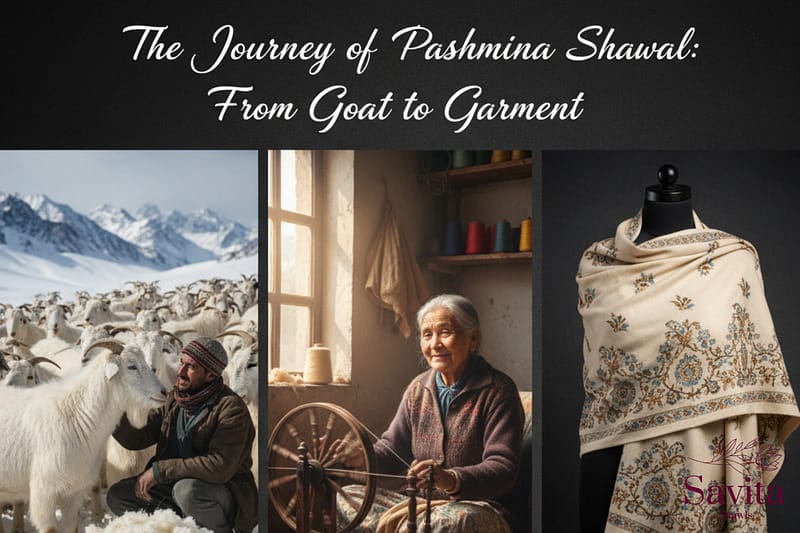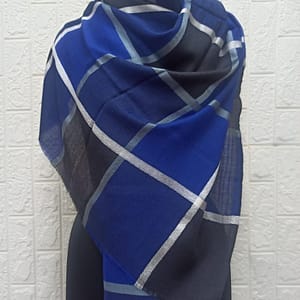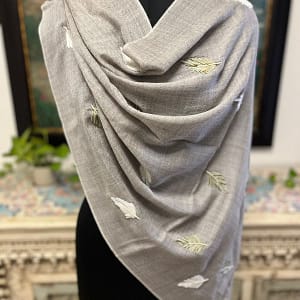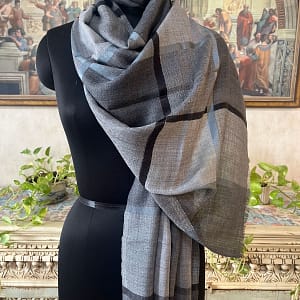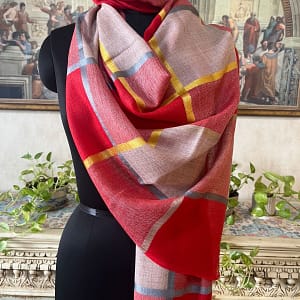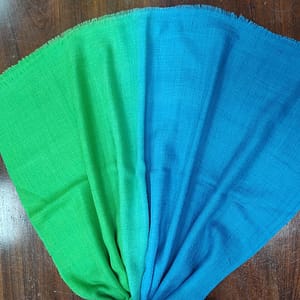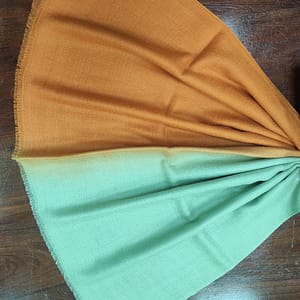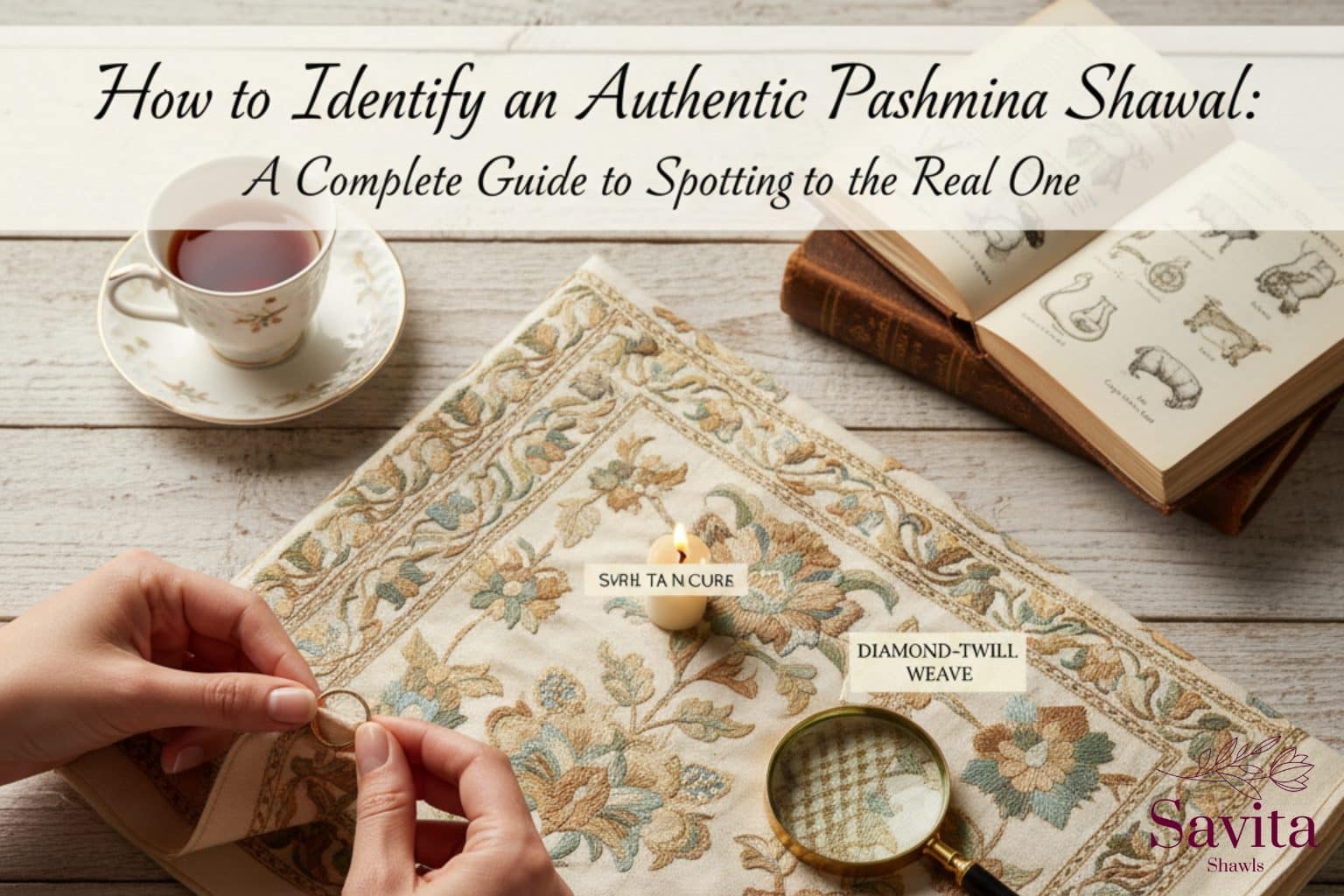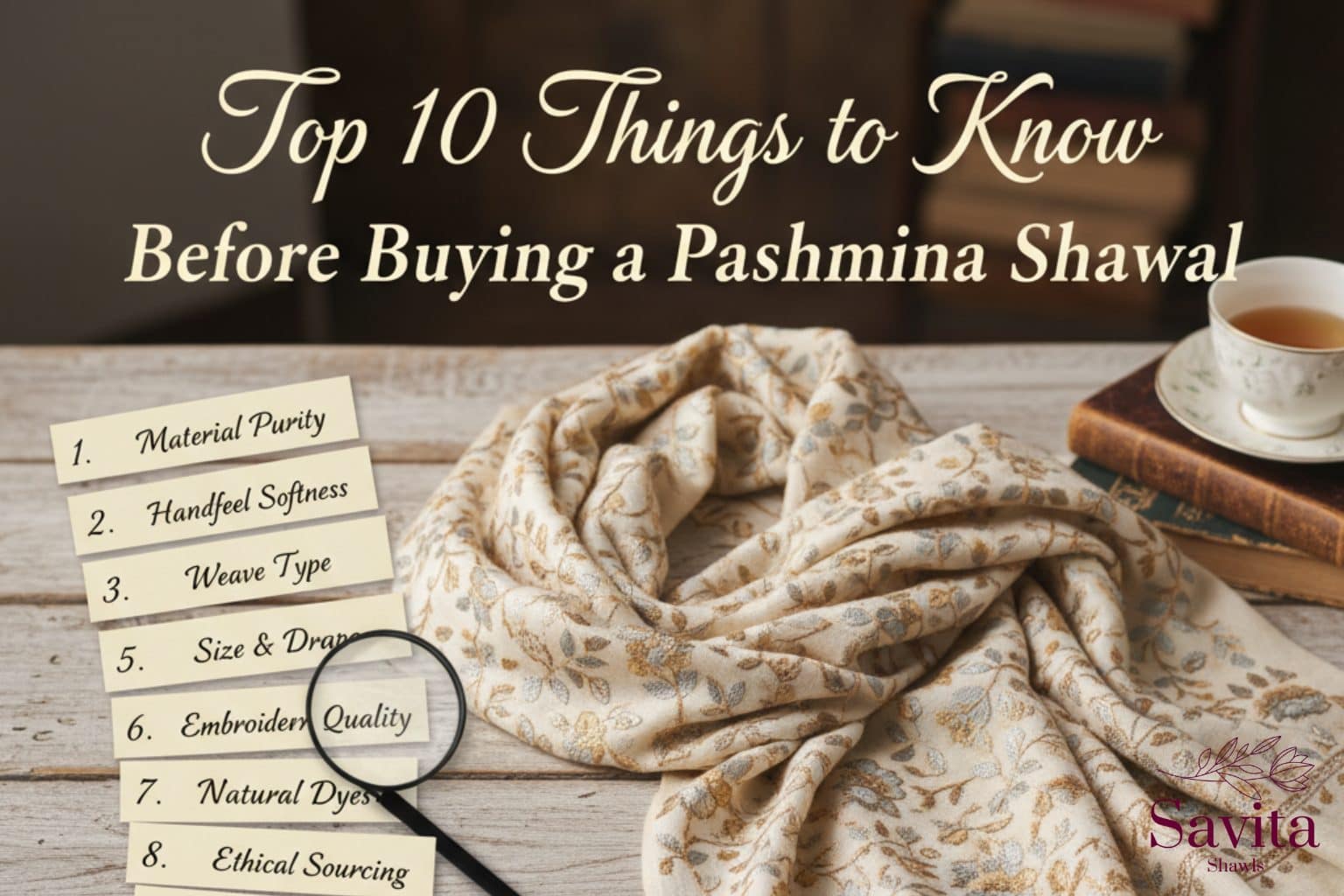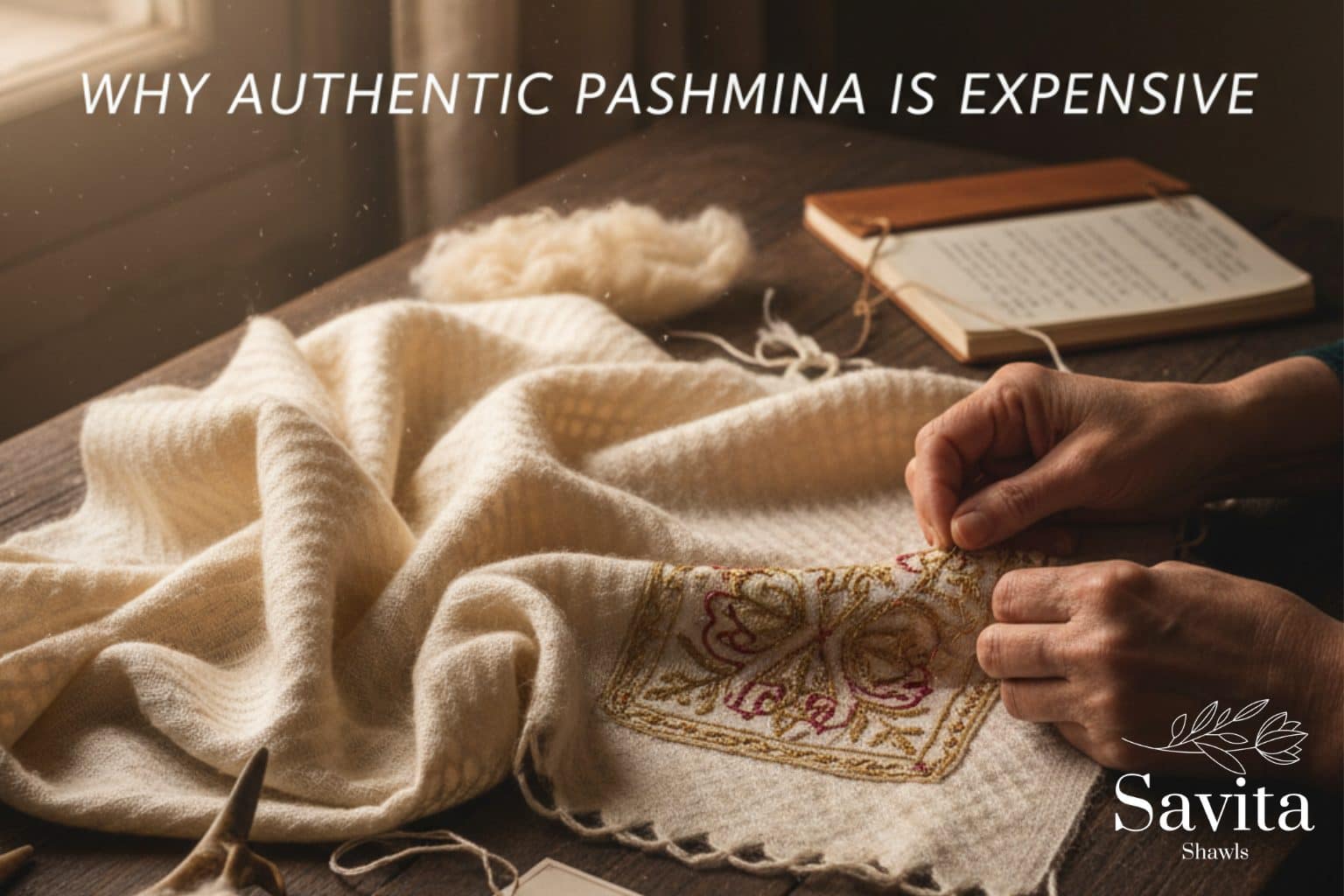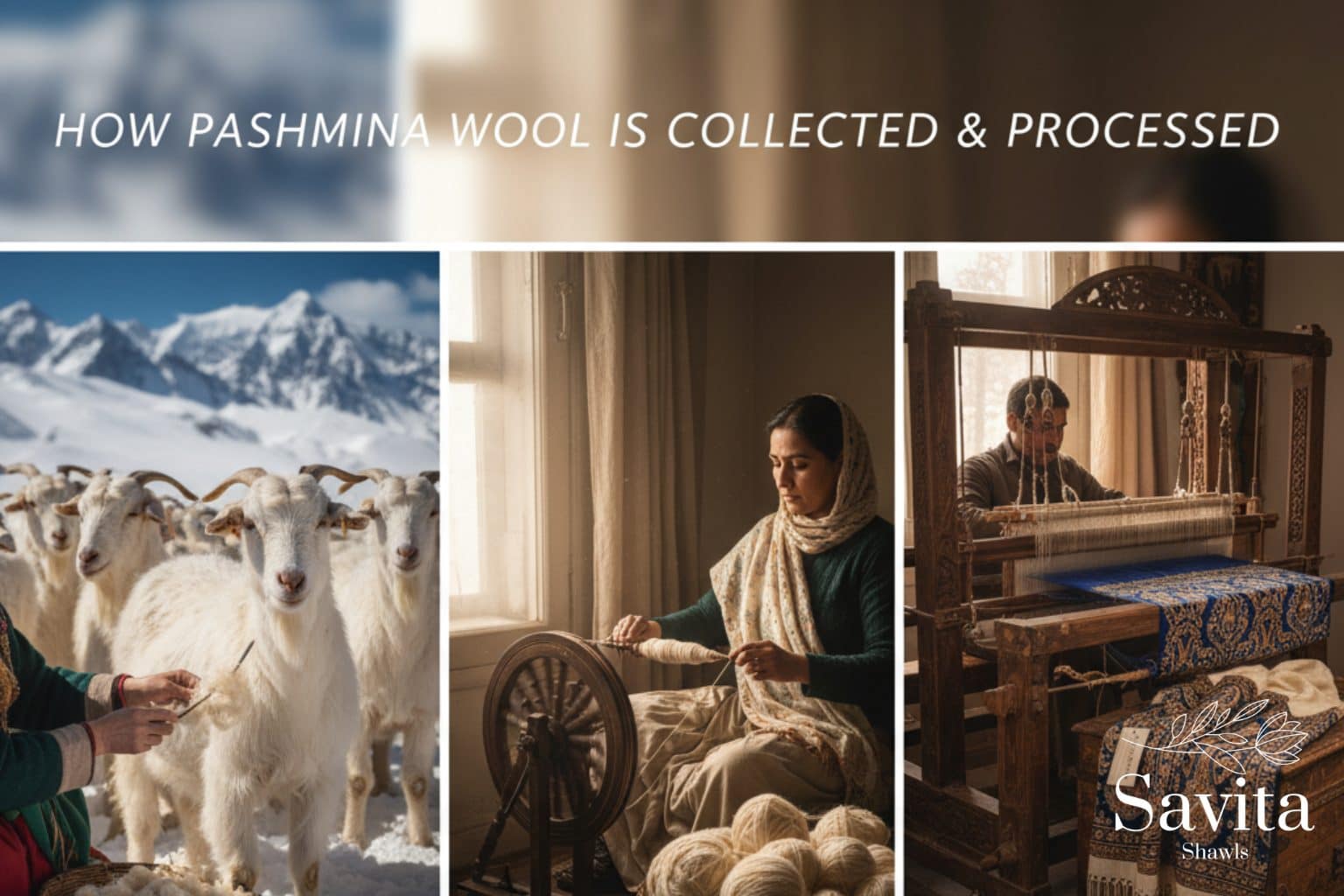Introduction: The Story Behind Every Shawl
A Timeless Craft Rooted in Heritage
A Pashmina shawl is not just a winter accessory; it is a heritage piece that tells the story of skill, culture, and tradition through the ages. The Journey of a Pashmina Shawl is a long process, beginning well before it gets into your wardrobe. It takes off in the harsh and cold mountains of Ladakh and finally reaches the expert craftsmen in Kashmir, where they turn the raw fiber into a soft and luxurious fabric. This incredible change of state is a demonstration of the artistic skills and imagination of the people who make authentic Handmade Pashmina, thus keeping alive a tradition that has been handed down through the generations.
A Journey Interwoven with Nature and Craftsmanship
The Journey of a Pashmina Shawl is a seamless harmony of nature’s best fibers and the unparalleled skill of Kashmiri artisans. The Pashmina Production process includes careful combing of the Changthangi goat, meticulous cleaning, hand-spinning, gentle dyeing, and slow weaving with the use of traditional wooden looms. Each step calls for precision, patience, and a deep understanding of the behavior of fibers. This is the reason an authentic Pashmina is regarded as a masterpiece of commitment and expertise, thus distinguishing it from its machine-made counterparts
The Emotion and Legacy Woven Into Every Thread
Every authentic Pashmina carries with it a story full of feelings and culture. The fiber passes from the goat to the shawl and each artisan imparts their skill, imagination, and personal touch to the respective weave. The end product is not merely a shawl but a breathing proof of Kashmir’s artistic character. A Pashmina Shawl’s road portrays strength of character, history, and love, thus each item turns into one of a kind and profoundly significant. This history of Handmade Pashmina is still alive today, and it is still appreciated all over the world for its stunning beauty, warmth, and genuineness.
The Changthangi Goat and Its Wool
The Beginning of the Journey of a Pashmina Shawl in Ladakh
The making of a Pashmina Shawl is an event that takes place in the beautiful but harsh environments of Ladakh, a cold desert that is well known for its high altitude and extreme weather conditions. The rare Changthangi goat lives here, at heights that are more than 14,000 feet — the only goat that can produce authentic Pashmina wool. Temperatures of this region are freeze-cold, but it is not only a challenge but a blessing in disguise, as they cause the formation of the finest and softest undercoat. This natural condition is a major contributor to the production of Pashmina, it is specially the purity and texture that catch the attention of the world and make these shawls very desirable. For centuries the people of Ladakh have been very close to these goats, and they have been practicing traditional herding methods that are both eco-friendly and of good quality.
Collecting the Raw Pashmina Fibre
With spring season annually, melting the snow, herders start to engage in one of the main tasks of Pashmina production the collection of the softest undercoat. The gentle hand combing method is used to remove the fleece instead of shearing, thus keeping the animal unhurt and free from stress. This method demands not only patience but also perfect technique and the knowledge of generations. The resulting mingled hairs, quite often referred to as raw Pashmina, are unbelievably light, warm, and naturally luxurious. This unrefined material is the starting point of everything that comes later in the long Journey of a Pashmina Shawl, influencing the warmth, softness, and rarity of the final product. The metamorphosis from goat to shawl is a long and careful process and this step is where the real start of Handmade Pashmina craft gets marked.
Spinning the Delicate Fibres
Spinning: The Delicate Transformation in the Journey of a Pashmina Shawl
The spinning art is the first very important stage in the Journey of a Pashmina Shawl after the raw fleece has been handled by the skilled and experienced artisans. Pashmina production is defined at this stage, where delicate and raw fibres are turned into fine threads that give birth to a Handmade Pashmina eventually. The spinning process is done traditionally by women artisans who have inherited this skill from their ancestors. They gently twist the raw fibres with the help of a simple wooden hand-spinning wheel called yinder, thereby making incredibly thin, soft, and strong threads that go on for endless lengths. The environment during this stage is usually very tranquil and silent because even a minor disturbance can be very upsetting to the fibres. This step not only requires technical skill but also narrates the cultural and emotional facets that are part of the Journey of a Pashmina Shawl, depicting the patience, commitment, and skill that are already there in every piece that traverses from goat to shawl.
The Precision and Patience Behind Turning Fibre Into Thread
It requires exceptional patience and a steady hand to spin the raw Pashmina into a uniform featherlight yarn. Among the various stages involved in the Journey of a Pashmina Shawl, the most delicate one, where even an imperceptible fluctuation of tension could te-nder the fibers, is the spinning stage. The craftsmen have to keep the yinder perfectly balanced, rhythmic, and controlled for hours. This laborious operation imbues the final thread with its natural strength, warmth, and softness, which are the main features of an authentic Handmade Pashmina. The attention given at this spinning stage determines the quality of all subsequent Pashmina production steps— weaving, washing, dyeing, and finishing. This metamorphosis from goat to shawl unveils the level of human expertise involved before a Pashmina is actually loomed at all.
Traditional Weaving on Looms
Weaving: The Heart of Artistry in the Journey of a Pashmina Shawl
The crafting of the Pashmina shawl is an artisanal activity, and the weaving process can already be counted as one of the most creative along with the delicate spinning stage. The joining of the transformed fibers into a shawl takes place during this central Pashmina manufacturing process. The ancient wooden handlooms, which are a part of Kashmiri heritage for hundreds of years, is used by the master weavers, who are often trained since childhood. These workers are only using hand techniques and direct every thread with such accuracy that it seems almost magic. Their know-how permits to unite the very fine Pashmina yarn in such a way that it becomes shawls, stoles, and scarves which not only reflect but also inculcate authenticity, gentleness, and the eternal beauty of Handmade Pashmina. The rhythmic movement of the loom breathes life into each strand and shows how important this stage in the whole process from goat to shawl was culturally.
Crafting Intricate Patterns Through Time, Skill, and Tradition
Making a Pashmina shawl is not an easy thing to do, yet it is a slow, delicate craft that requires a lot of patience, a lot of creativity and very good skill. No matter how complicated the design is, the weaving part of the Journey of a Pashmina Shawl can last from a few days to many months. The weavers from Kashmir are, without a doubt, the best ones worldwide and they have a reputation for having superior skills especially in creating patterns like kani, jamawar, and sozni. All these patterns need an expert’s full attention, a master understanding of the fibre nature and years of practice. Every patterned shawl is a unique art piece and a heritage story. Due to the careful weaving process every Handmade Pashmina not only retains its softness but also carries the detailed motifs signifying its high value that are still imperceptible to the untrained eye. This slow but very meaningful an up to the very last detail stage reflects Pashmina’s ultimate quality and is marking the next significant goat-to-shawl process milestone.
The Finishing and Dyeing Process
Washing: Preparing the Fabric for the Final Stages in the Journey of a Pashmina Shawl
The next phase of the Pashmina Shawl Journey after the fabric is woven with great skill is washing. This is a necessity in Pashmina factories that is meant to cleanse the yarn of natural oils, dust, and other impurities that remain after spinning and weaving. In the past, craftsmen would battle with nature and the many other major and minor steps in Pashmina production to ensure the finest, most delicate, and purest Handmade Pashmina was achieved. The washing process goes on more or less like that, but in the end, the fabric becomes that little bit softer, and its natural skin feels stronger and more durable. This stage is the turning point of the long journey from goat to shawl, as the fabric starts showing its exquisite softness and luxurious feel.
Dyeing: Bringing Colour and Life to Handmade Pashmina
The shawl undergoes a vigorous wash and dry process before entering the dyeing phase—the vibrant and transformative step in the Journey of a Pashmina Shawl. Artisans apply natural dyes obtained from plants, minerals, and flowers, or if synthetic dyes are used, these are non-toxic eco-friendly ones specifically selected to safeguard the delicate Pashmina fibres. The colour of the fabric is heightened during the dyeing session, but the artisans make sure that they do not lose the softness of the shawl. The dyehouses in Pashmina production are inspired by the landscapes of Kashmir and Ladakh more often than not. Sunset orange, earthy brown, forest green, and deep mountain blue are some of the shades that are used and they perfectly reflect the natural beauty that is around the artisans. The dyeing process not only adds character and elegance but also instills the personality to each Handmade Pashmina, thus determining the identity of the final piece as it travels from goat to shawl.
Artistic Detailing and Quality Check
Artistic Detailing: Elevating the Craft in the Journey of a Pashmina Shawl
The artwork of the hand-embroidery process takes the experience of a Pashmina Shawl one step further, thereby elevating the piece from a mere article of clothing to a work of art— almost like a hand-embroidery. This process is an integral part of the Pashmina production, where the expert master artisans make the shawl with such delicate and intricate designs that the viewer cannot help but think of the age-old Kashmiri traditions. The craftsman will be using the sozni, tilla, and kani embroidery techniques to work on the shawl for weeks if not months, adding very small details to it. Both the artisans’ and the techniques’ precision, patience, and thorough understanding of the materials’ behavior are put to the test throughout this process, which is totally done by hand. The Handmade Pashmina gains not only the visual but also the textual quality from each stitch, as various colors and textures come up with the patterns that are derived from nature, culture, and the region’s creative spirit. This step is one of the major factors in the lengthy metamorphosis from goat to shawl, and thus, each embroidered Pashmina becomes not only beautiful but also rich in culture.
Quality Check: Ensuring Authenticity and Perfection
When the final artistic detailing is finished, the shawl proceeds to one of the most crucial steps in the Journey of a Pashmina Shawl – the final quality check. This stage is the protection of Handmade Pashmina art and only the best pieces make it to the customer. Each shawl is inspected by experienced artisans meticulously for softness, evenness of weaving, richness of color, precision of embroidery, and overall quality. As Pashmina has earned its place in the world for its excellent quality, the quality-control process has become a necessary part of Pashmina production. Any shawl that does not conform to the given standard is put aside for either correction or rework. This rigorous assessment assures that every piece that has traveled from goat to shawl is perfect, luxurious, and in sync with the tradition of Kashmiri craftsmanship.
Savita Shawls Signature Touch
Savita Shawls is the place where every Pashmina is made with the utmost reverence for both tradition and the artisans who make this heritage live. We collaborate with local weavers, maintaining the ethical process and the passing of techniques down. Each piece, from the most quality-controlled wool to the last stitch, is the picture of superior quality, genuineness, and artistic mastery. Savita Shawls merges the ancient artistry with the modern sophistication and is thus presenting the collections that not only reveal the past but also the present through the medium of style.
Conclusion: A Journey of Pure Artistry
The Journey of a Pashmina Shawl is a remarkable tale of nature, craftsmanship, and culture. From the Changthangi goat to the skilled hands of artisans, every phase adds beauty and meaning. A truly handmade Pashmina is not just a garment — it is a legacy that carries centuries of tradition and artistry.
Through this journey, Savita Shawls brings you closer to the magic behind every thread, offering shawls that are timeless, luxurious, and crafted with soul.
Related Products
Showing 1–9 of 805 results
-
Savita Shawls Royal Blue & Black Wool Natural Silk Box Pashmina Shawl for Women
Read more -
Savita Shawls Elegant Grey & Black Wool Natural Silk Box Pashmina Shawl for Women
Read more -
Beige & Charcoal Wool Natural Silk Box Design Pashmina Shawl for Women
Read more -
Yellow & Navy Wool Natural Silk Box Design Pashmina Shawl for Women
Read more -
Grey & Black Wool Natural Silk Box Design Pashmina Shawl for Women
Read more -
Red & Beige Wool Natural Silk Box Design Pashmina Shawl for Women
Read more -
Green & Blue Wool Natural Ombre Pashmina Shawl for Women
Read more -
Beige & Soft Pink Wool Natural Ombre Pashmina Shawl for Women
Read more -
Rust Orange & Mint Green Wool Natural Ombre Pashmina Shawl for Women
Read more

